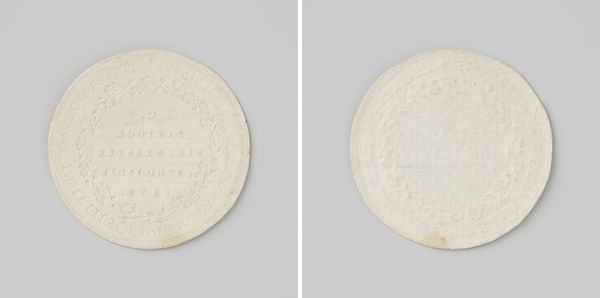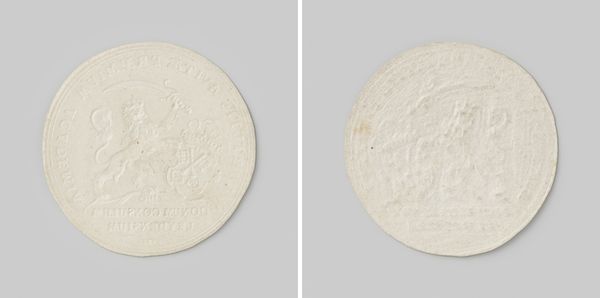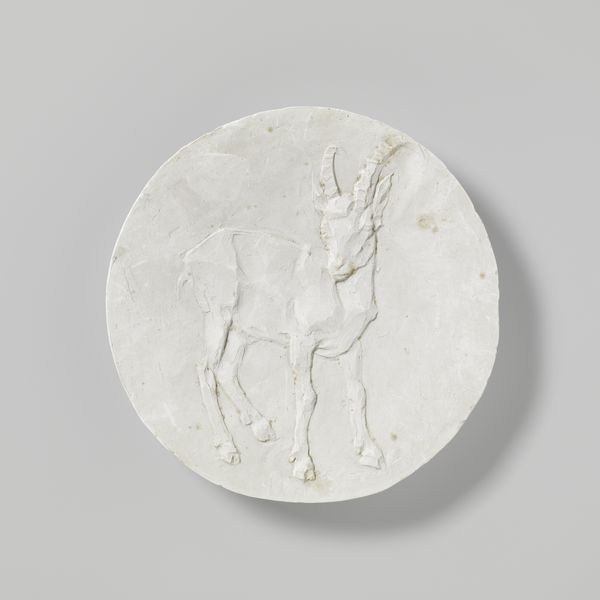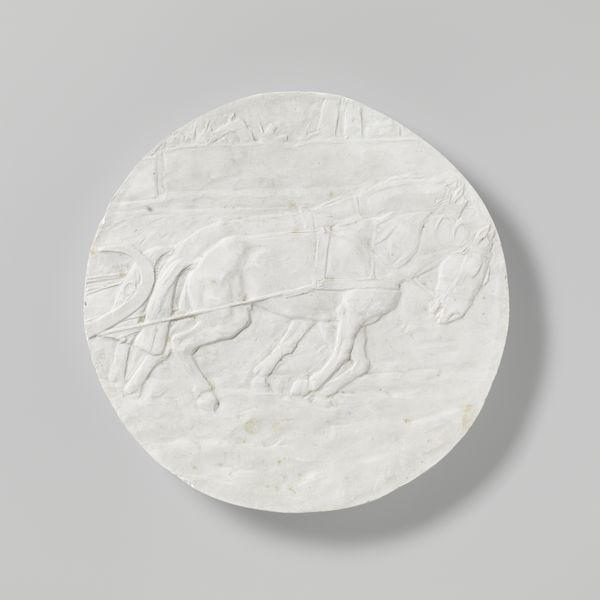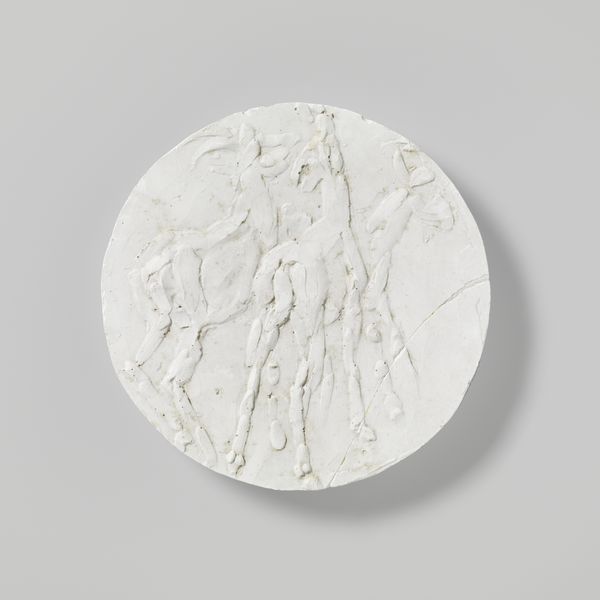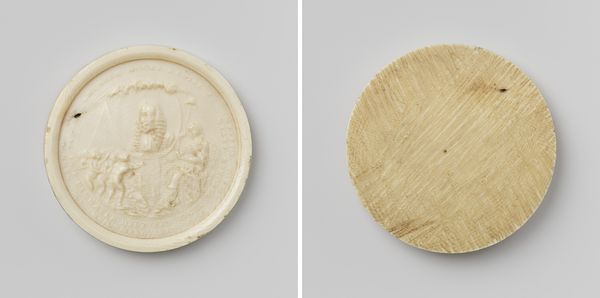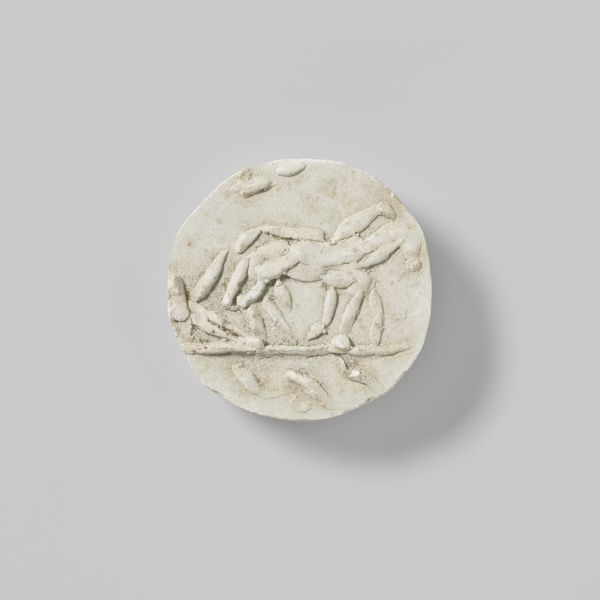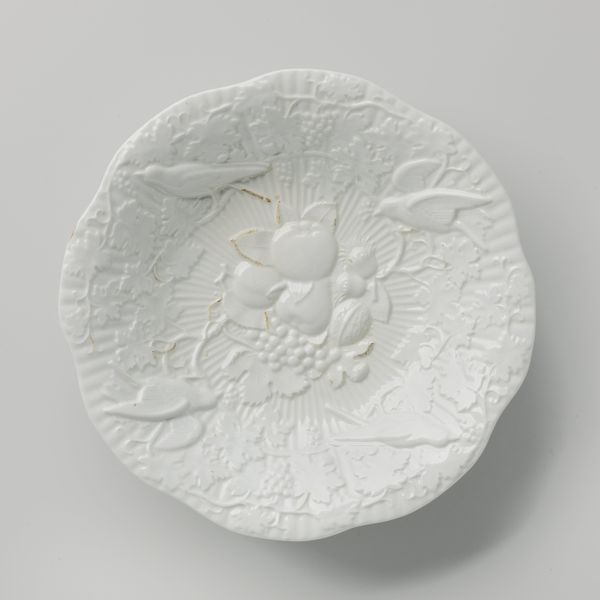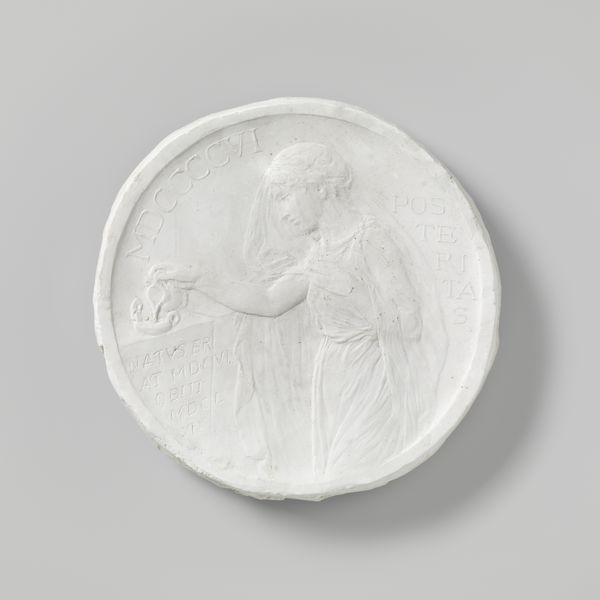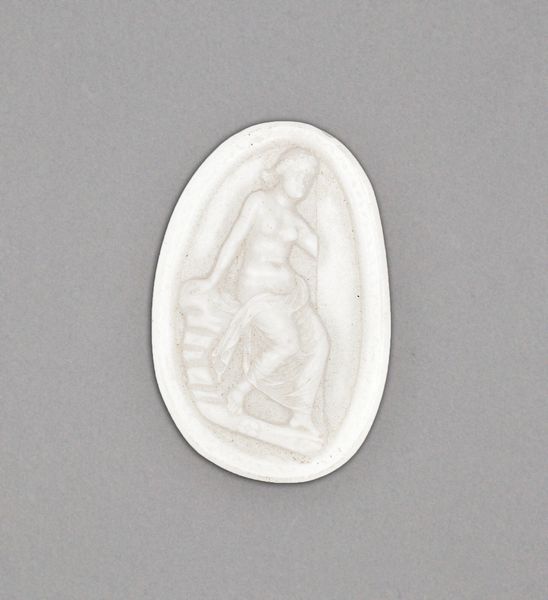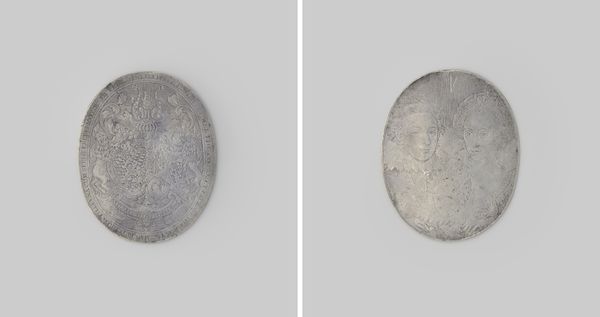
ceramic, sculpture
#
portrait
#
neoclacissism
#
ceramic
#
stoneware
#
sculpture
#
ceramic
Dimensions: length 2.6 cm, width 2.0 cm, thickness 0.5 cm, weight 4.87 gr
Copyright: Rijks Museum: Open Domain
Curator: Here we have an intriguing object: a portrait of Willem V, Prince of Orange-Nassau, likely crafted between 1785 and 1795. The museum attributes this to an anonymous artist. It’s fashioned from stoneware. Editor: There’s something so austere, so quietly potent about its monochrome. It’s ghostly in a way. Curator: Yes, it embraces that neoclassical cool, that desire for simplicity and clarity, recalling classical antiquity. We often find stoneware lending itself to these forms of intimate, almost personal portraiture. Consider the weight an object like this could carry, meant to convey the importance of its subject through more than mere ornamentation. Editor: I see a carefully composed bust in profile. What strikes me most is the almost intentional flatness of the image, how little depth is implied beyond the necessary contours of his features. The choice is bold when one is so intimately examining such powerful features. What is that intended impact, one must wonder. Is the symbolic flattening a symbol for a particular type of authority? Curator: Perhaps a desire to be seen as firm, unyielding? The Netherlands in that period was hardly unified or still, and such an impression could be one he needed to convey. Yet, there’s a vulnerability too in presenting oneself in such unadorned fashion. No gold trim, no flourishes… a plain statement. Editor: Exactly, every choice—down to the angle of his nose, the precise rendering of his curls—would be freighted with intention. Even the decision to forgo the flourish becomes a very vocal type of communication in that moment. The symbolic economy of this bust feels both revealing and reticent, making it truly enigmatic. The object demands more than it necessarily renders. Curator: I agree wholeheartedly. Considering the history behind it, one feels the image's symbolism reveals the story itself: a leader amidst immense turmoil and transition. Editor: Thank you. I now sense its haunting and enduring character so vividly. It stands out as a wonderful memento mori of those long-forgotten eras.
Comments
No comments
Be the first to comment and join the conversation on the ultimate creative platform.
